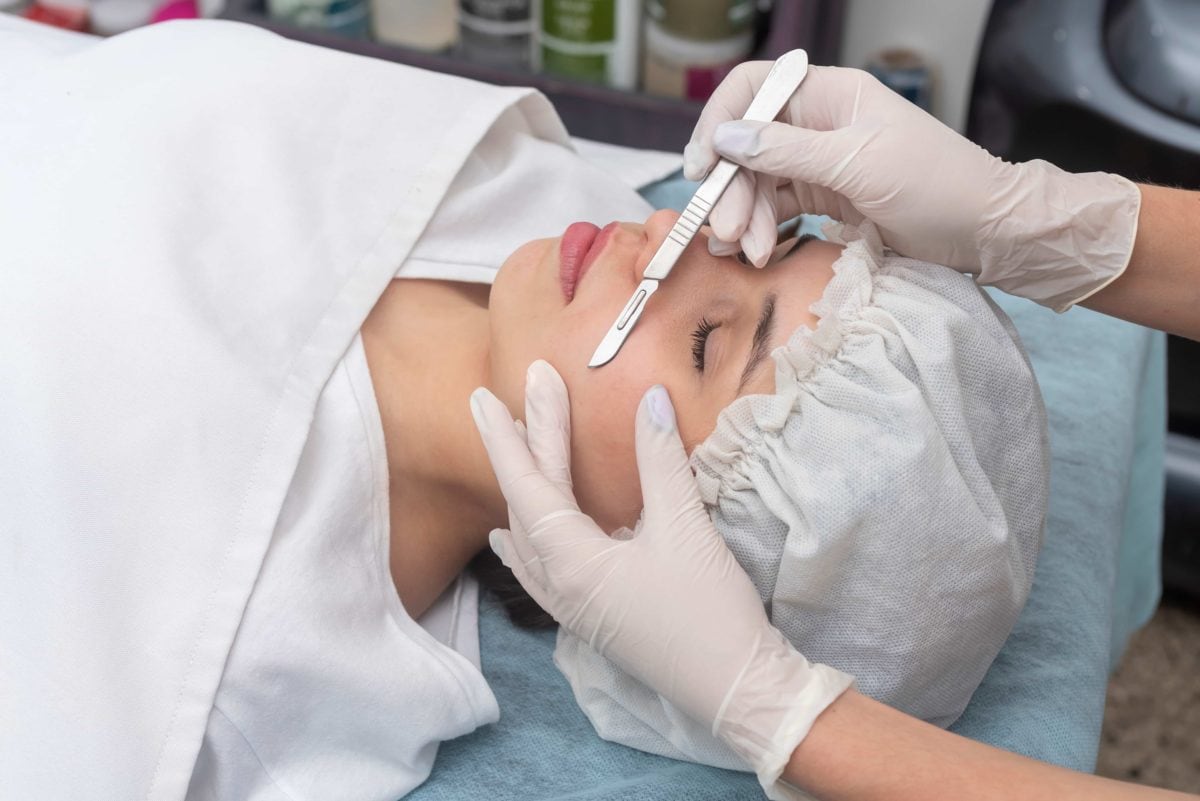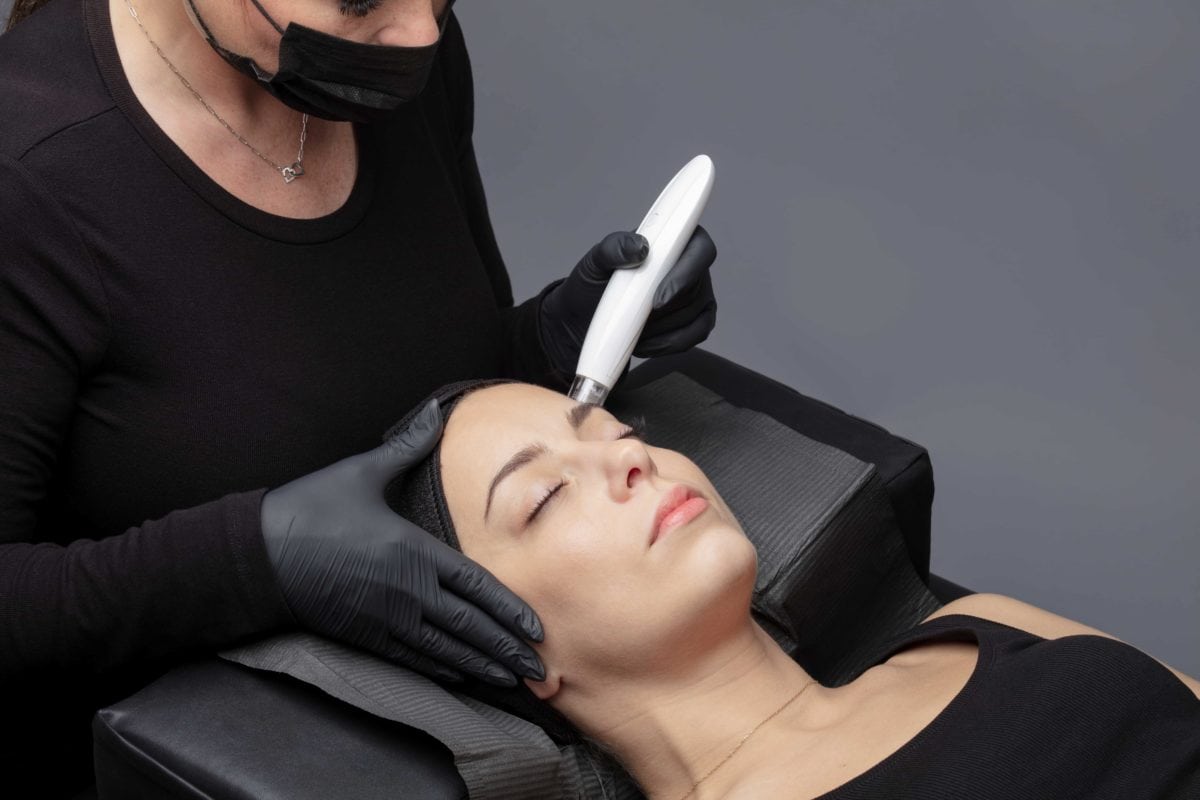
Ever Wondered How to Achieve a Flawless, Glowing Skin?
Achieving a flawless, glowing complexion often seems like a puzzle with infinite pieces. Between various products, treatments, and lifestyle choices, finding the right combination that suits your unique skin can be daunting. Skincare, however, goes beyond merely following a beauty routine. It represents an essential self-care practice, a way to express self-love and invest in self-confidence.
In the sea of skincare practices, one procedure has been making waves for its simplicity and remarkable results – dermaplaning. Once a secret of the Hollywood elite, it’s now making its way into mainstream skincare routines and winning the hearts of skincare enthusiasts everywhere.
But what exactly is dermaplaning, and how can it be the key to unlocking a smooth, glowing complexion?
Dermaplaning, a physical exfoliation procedure, holds the answer. It involves gently “shaving” the skin’s surface using a specialized surgical scalpel, effectively removing the top-most layer of dead skin and fine vellus hair, known as “peach fuzz.” While sounding intense, this treatment is non-invasive, pain-free, and carried out by skilled professionals.
The result? Immediate rejuvenation of the skin, an enhanced natural glow, and a silky-smooth touch. By eliminating the outer layer of dead cells, dermaplaning unveils a fresh, healthy layer of skin hidden beneath. Your skincare products work more efficiently as they penetrate deeper into the skin, delivering their benefits where they are most needed.
In the subsequent sections, we will delve deeper into the science behind dermaplaning and its many benefits. Stay tuned to understand why this could be the transformative treatment your skin has been yearning for.
What is Dermaplaning?
Dermaplaning, a highly effective physical exfoliation procedure, has become a sought-after treatment in skincare. This technique targets the skin’s outermost layer – the layer often responsible for a dull, lifeless appearance. The beauty of dermaplaning lies in its simplicity, non-invasive nature, and immediate results, making it a rising star in skincare.
At its core, dermaplaning involves a trained esthetician who uses a sterile, surgical-grade scalpel to gently “shave” the skin’s surface. But don’t let the term ‘shaving’ scare you off. This procedure is more of a delicate skimming, expertly performed to eliminate the dead skin cells that build up on the surface of our skin. This accumulated layer, which can make our complexion look dull and uneven, also impedes the absorption of skincare products.
But the benefits of dermaplaning go beyond just exfoliation. An equally important aspect of this technique is removing vellus hair, often called “peach fuzz.” These tiny, fine hairs on our face can trap dirt and oil, leading to clogged pores and blemishes. By removing these hairs, dermaplaning not only helps in achieving a smoother skin texture but also in reducing acne breakouts.
When performed correctly, dermaplaning produces smoother, brighter skin that feels refreshed and revitalized. It enhances your skin’s natural glow, revealing a healthy and radiant complexion. This makes the technique a go-to choice for anyone looking to boost their skin’s appearance immediately.
One of the key reasons for the rising popularity of dermaplaning is its non-invasive nature. Unlike some other skin treatments, dermaplaning doesn’t require any recovery time. You can resume your regular activities right after the procedure. The simplicity of the technique, combined with its impressive results, make it a favorite among skincare enthusiasts who want an effective, no-downtime solution for a smoother and brighter complexion.
The Magic Behind Dermaplaning
Smoother Skin
The primary goal of dermaplaning is to leave your skin feeling incredibly smooth. By removing the top layer of dead skin cells, your complexion is immediately rejuvenated, revealing fresh, healthy skin underneath.
Improved Skincare Product Absorption
Without the barrier of dead skin and peach fuzz, your skincare products can penetrate deeper into the skin. This allows for better absorption and improved effectiveness of your favorite serums and moisturizers.
A Natural Glow
As dermaplaning sheds dull, dead skin, it brings your natural, radiant complexion forward. The process stimulates blood flow and promotes new skin cell growth, giving you that desired glow.
Is Dermaplaning Safe?
When it comes to any skincare procedure, safety is a top concern. With dermaplaning, rest assured that it’s effective and safe. Performed correctly by a trained professional, dermaplaning is a safe and painless procedure. As with any skincare treatment, it’s important to consider individual skin conditions and needs.
Dermaplaning is often described as feeling similar to the swipe of a credit card across your skin. It’s a gentle process that doesn’t involve pulling or tugging, reducing the risk of causing wrinkles or fine lines. Moreover, the procedure does not involve harsh chemicals, making it a great option for those who prefer a more natural approach to skincare.
The procedure is safe for almost all skin types. Whether your skin is dry, oily, mature, or somewhere in between, you can benefit from the rejuvenating effects of dermaplaning. It can also be a beneficial treatment for reducing the appearance of fine lines, hyperpigmentation, and minor scarring.
However, certain skin conditions may not pair well with dermaplaning. Those with active acne, for example, should consider other options. Dermaplaning over acne can irritate and potentially lead to further breakouts. Similarly, those with highly sensitive skin or conditions like rosacea may want to proceed cautiously. It’s always best to consult a skin care professional before starting a new treatment to ensure it fits your skin type and concerns.
The safety and effectiveness of dermaplaning are significantly enhanced when trained professionals carry out the procedure. They have the knowledge and skill to perform the treatment correctly and address concerns. Therefore, always ensure you get the procedure done at a trusted establishment.
Making Dermaplaning Part of Your Skincare Routine
Now that you understand the magic of dermaplaning, you might be wondering how often you should incorporate it into your skincare routine. Most professionals recommend a session every 3-4 weeks, aligning with the skin’s natural regeneration cycle.
Achieving Your Skin Goals with Beauty Nurse Bre
Every skin type is unique and deserves personalized care. At Beauty Nurse Bre, we believe in providing effective and safe skincare solutions that meet your specific needs. Let’s unlock the secret to your smooth, glowing complexion with our expert dermaplaning services.
To learn more about how dermaplaning can transform your skin, visit us at beautynursebre.com and start your journey to a radiant complexion today.




